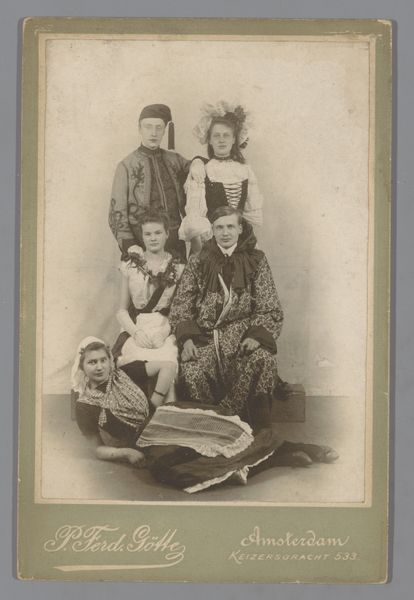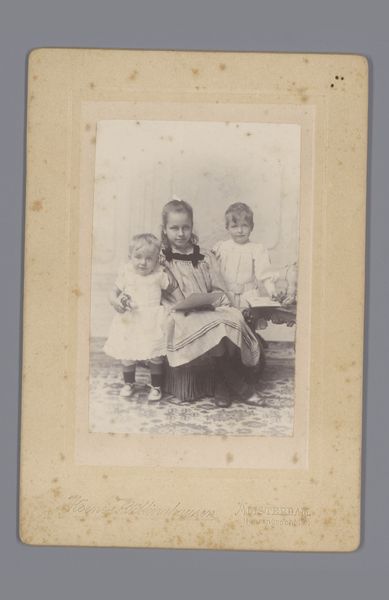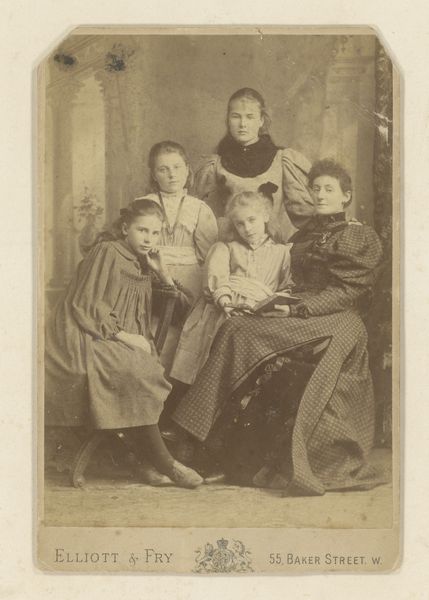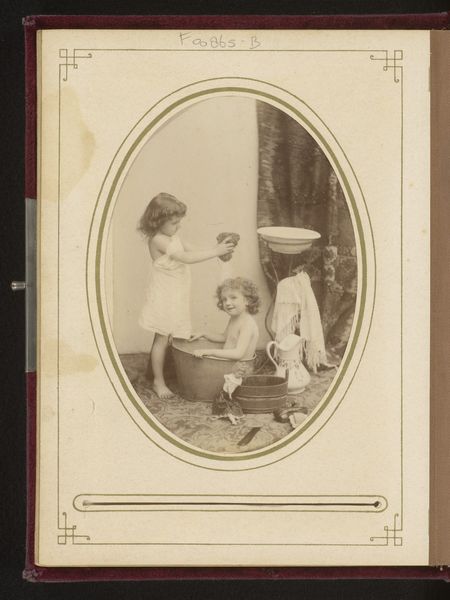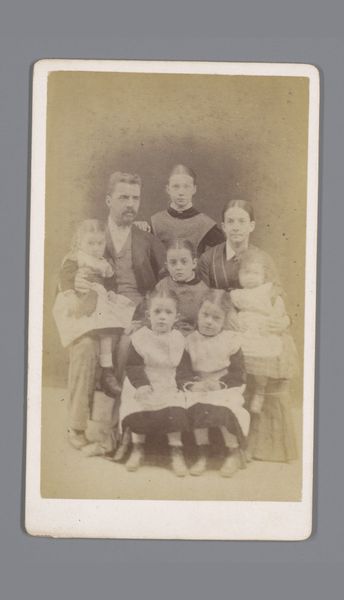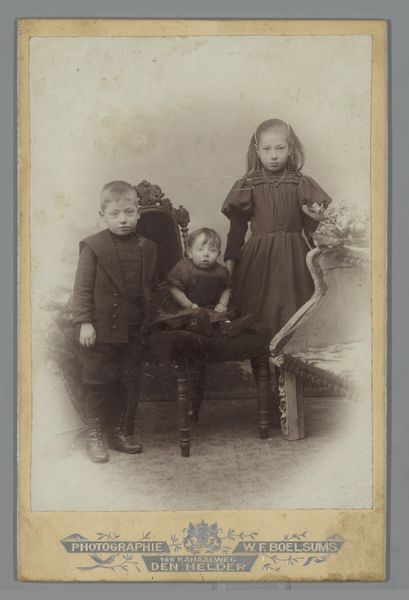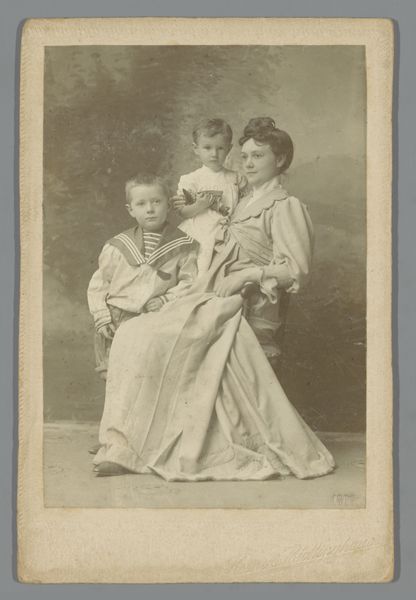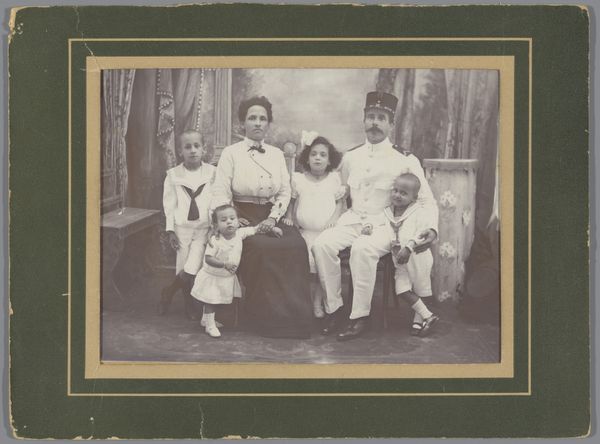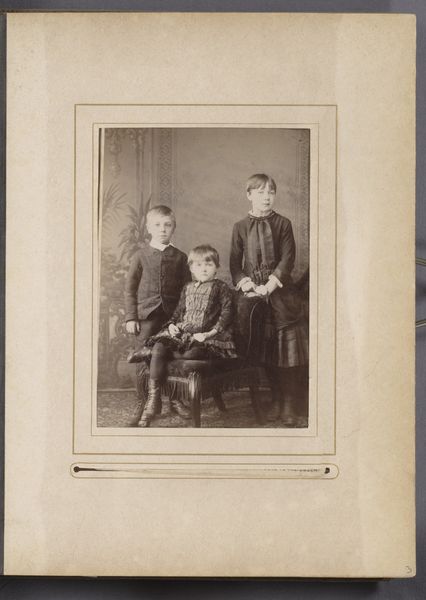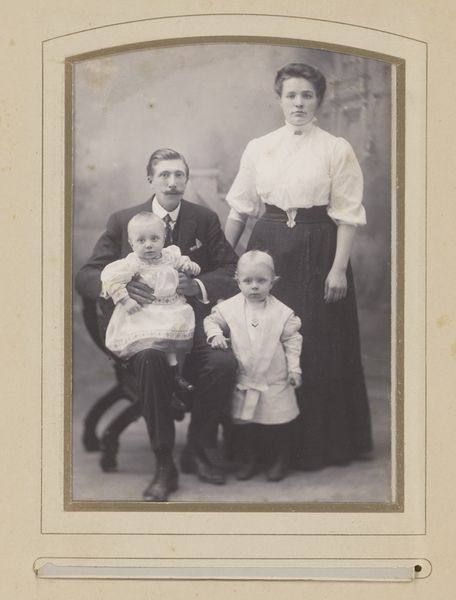
photography, gelatin-silver-print
#
portrait
#
photography
#
group-portraits
#
gelatin-silver-print
#
genre-painting
Dimensions: height 144 mm, width 102 mm
Copyright: Rijks Museum: Open Domain
Editor: Here we have a gelatin silver print titled "Portrait of a Woman and 5 Children" by Selle & Kuntze, dated circa 1890-1910. There’s an almost uncanny stiffness to the subjects that strikes me, very typical of photographs of this era, although the expressions are more engaging than in some others. How do you read this image? Curator: Well, let’s look at the semiotics present, shall we? Notice the nautical attire of the children – consciously styled sailor suits reflecting the growing popularity of naval themes, particularly amongst royalty and the upper classes. This projects status and reinforces cultural values surrounding family, order, and national pride. Consider also that each child's name is meticulously inscribed, numerically ranked almost like a display of prized possessions. How does that resonate with you? Editor: That is… unsettling. It feels as though these children are curated, like objects, for an idealised image of family. And those sailor suits... I now read them as uniforms representing expected societal roles. But do you think this aesthetic also softens the otherwise stern formality? Curator: Precisely! This apparent rigidity overlays underlying societal anxieties about maintaining class structures in an era of enormous social change. Even the selection of monochrome palette itself emphasizes gravitas. But remember, clothing carries symbolism too; their costumes reflect popular imagination. How the mother and children conform, both empowers the figures but it equally restrains and positions them. Editor: I see, so there is tension here between tradition and aspirations. It’s not *just* a photograph. It's about constructed ideals communicated through accessible visual language, isn't it? Curator: Indeed! By decoding these layered meanings, the past becomes vivid, reminding us that images aren't passive recordings; they actively shape cultural memory. And what's equally important, this decoding extends into *our* time, how these very cultural codes impact us, what meaning they have now. Editor: Thanks, I now see it less as a portrait and more as a fascinating document of a particular moment in time, reflecting both personal and social identities. It invites a continuing cultural interpretation across generations.
Comments
No comments
Be the first to comment and join the conversation on the ultimate creative platform.
